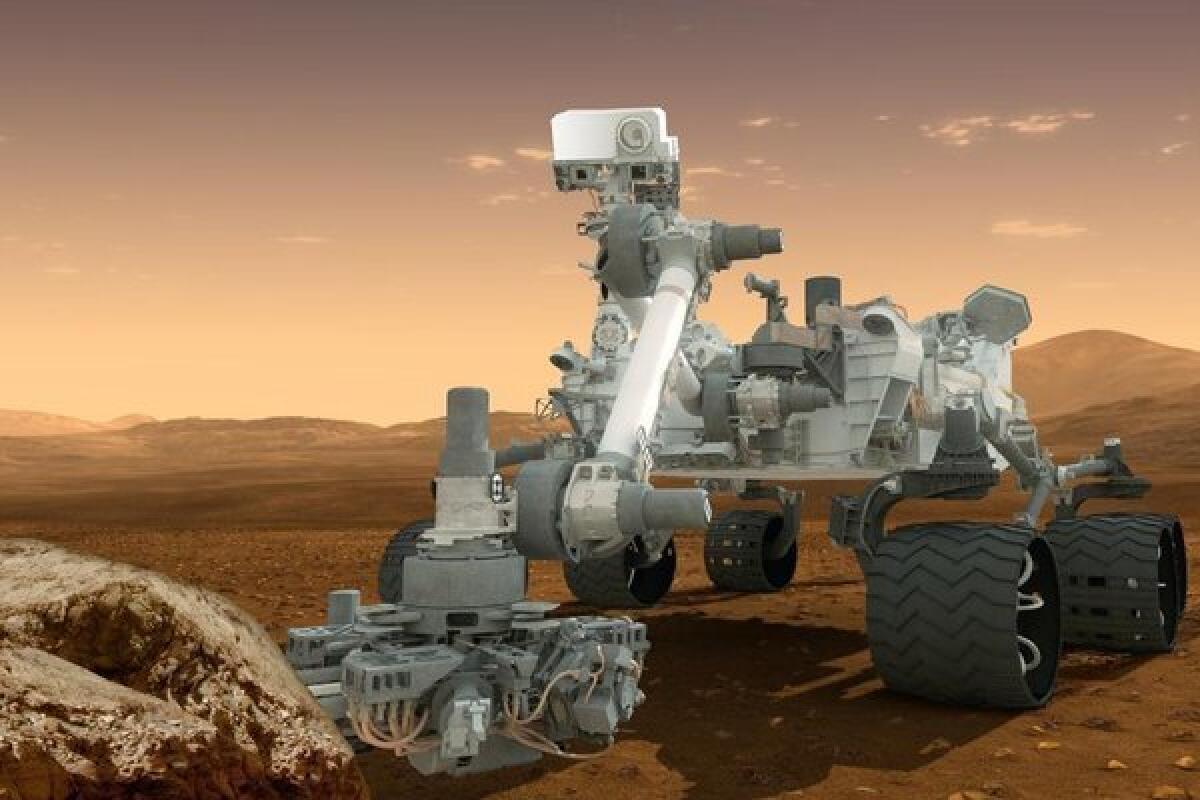NASA plans to send new rover to Mars in 2020

- Share via
NASA’s Curiosity and Opportunity rovers may be getting some company on Mars.
The space agency announced plans to send a new rover to the Red Planet in 2020. Though the specific scientific goals of the mission have not yet been decided, one may be to collect samples of rock and soil from the Martian surface that could be returned to Earth for study.
If the project goes ahead – it is contingent upon Congress agreeing to fund NASA at the level the Obama administration has requested for the next five years – the new rover would bring the number of active and planned Mars missions to seven.
In addition to Curiosity and Opportunity, the two rovers currently operating on Mars, NASA has two spacecraft in orbit around our planetary neighbor: Mars Odyssey and the Mars Reconnaissance Orbiter.
Next year, NASA is set to launch the Mars Atmosphere and Volatile EvolutioN satellite, or MAVEN, to study the Martian atmosphere. And just a few months ago, the space agency gave the green light to a mission called Interior exploration using Seismic Investigations, Geodesy and Heat Transport, or InSight, which will launch in 2016 to study the interior of Mars.
NASA is cooperating with the European Space Agency on several Mars missions as well.
The new rover will be based on the design for the Mars Science Laboratory, the official name for the Curiosity mission. As such, it will use the same entry, descent and landing technology designed at the Jet Propulsion Laboratory in La Canada Flintridge and made famous by the lab’s “Seven Minutes of Terror” video. But the new rover will have a different suite of scientific instruments, which will be selected after the mission’s scientific objectives are decided.
Former astronaut John Grunsfeld, NASA’s associate administrator for science, will elaborate on the announcement this afternoon at the American Geophysical Union meeting in San Francisco. His Q&A; with reporters is scheduled to begin at 4 p.m.
Scooping up samples from Mars and sending them safely back to Earth is a long-term goal for NASA, said Steven Squyres, chairman of the NASA Advisory Council and an astronomy professor at Cornell University in Ithaca, N.Y. The new rover will probably be designed with that in mind.
“Collecting a cache of samples is difficult -- it requires a very capable vehicle,” Squyres said Tuesday. “The vehicle that John Grunsfeld just described for launch in 2020 is fully capable of doing that job.”
President Obama has set a goal of sending astronauts to Mars orbit sometime in the 2030s.
Return to the Science Now blog.
Follow me on Twitter @LATkarenkaplan







